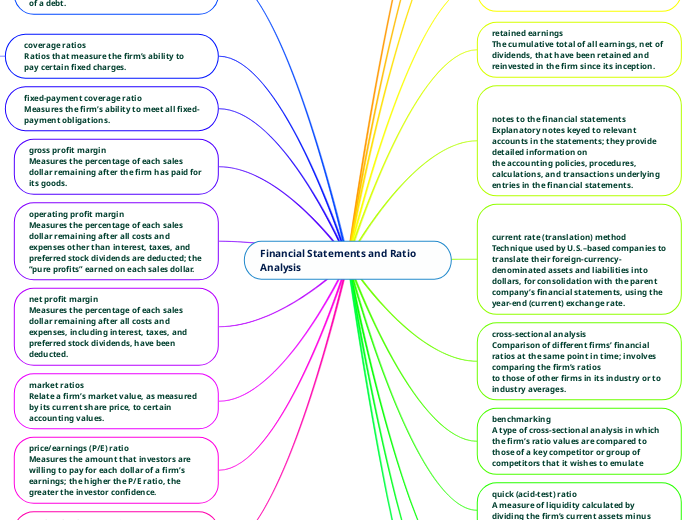Financial Statements and Ratio Analysis
The letter to stockholders is the primary communication from management. It describes the events that are considered to have had the greatest effect on the firm
stockholders’ report
Annual report that publicly owned corporations must provide to stockholders; it summarizes and documents the firm’s financial activities during the past year.
letter to stockholders
Typically, the first element of the annual stockholders’ report and the primary communication from management.
income statement
Provides a financial summary of the firm’s operating results during a specified period.
dividend per share (DPS)
The dollar amount of cash distributed during the period on behalf of each outstanding share of common stock.
balance sheet
Summary statement of the firm’s financial position at a given point in time.
current assets
Short-term assets, expected to be converted into cash within 1 year or less.
current liabilities
Short-term liabilities, expected to be paid within 1 year or less.
retained earnings
The cumulative total of all earnings, net of dividends, that have been retained and reinvested in the firm since its inception.
notes to the financial statements
Explanatory notes keyed to relevant accounts in the statements; they provide detailed information on
the accounting policies, procedures, calculations, and transactions underlying entries in the financial statements.
current rate (translation) method
Technique used by U.S.–based companies to translate their foreign-currency-denominated assets and liabilities into dollars, for consolidation with the parent company’s financial statements, using the year-end (current) exchange rate.
cross-sectional analysis
Comparison of different firms’ financial ratios at the same point in time; involves comparing the firm’s ratios
to those of other firms in its industry or to industry averages.
benchmarking
A type of cross-sectional analysis in which the firm’s ratio values are compared to those of a key competitor or group of competitors that it wishes to emulate
quick (acid-test) ratio
A measure of liquidity calculated by dividing the firm’s current assets minus inventory by its current liabilities
inventory turnover
Measures the activity, or liquidity, of a firm’s inventory.
average age of inventory
Average number of days’ sales in inventory.
average collection period
The average amount of time needed to collect accounts receivable.
total asset turnover
Indicates the efficiency with which the firm uses its assets to generate sales
total asset turnover
Indicates the efficiency with which the firm uses its assets to generate sales
total asset turnover
Indicates the efficiency with which the firm uses its assets to generate sales
financial leverage
The magnification of risk and return through the use of fixed- cost financing, such as debt and preferred stock.
degree of indebtedness
Measures the amount of debt relative to other significant balance sheet amounts.
ability to service debts
The ability of a firm to make the payments required on a scheduled basis over the life of a debt.
coverage ratios
Ratios that measure the firm’s ability to pay certain fixed charges.
debt ratio
Measures the proportion of total assets financed by the firm’s creditors.
times interest earned ratio
Measures the firm’s ability to make contractual interest payments; sometimes called the interest coverage ratio
